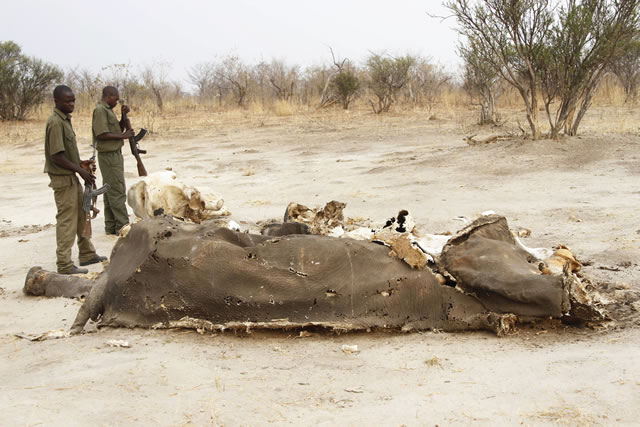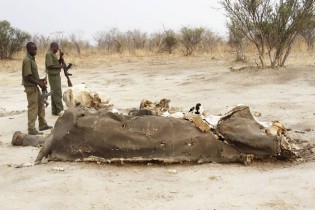Poacher fight: Parks mobilises ex-workers

 Peter Matambanadzo in HWANGE
Peter Matambanadzo in HWANGE
THE Parks and Wildlife Management Authority has recalled all former workers to reinforce its manpower to fight poaching that has reached unprecedented levels at Hwange National Park.The call was made following the cyanide poisoning of 10 more elephants, bringing the total number of poisoned elephants to 100 in less than two months in what has been described as the worst poaching disaster in Zimbabwe’s history.
“All employees who had an amicable separation with Zimbabwe National Parks and Wildlife Management Authority who feel can make a meaningful contribution to anti-poaching should report to the nearest parks offices on Monday (today),” Parks director-general Mr Edison Chidziya said.
He said the situation was getting out of control and the authority needed the manpower to support their efforts to contain poaching in the country’s giant animal sanctuary.
“Already we have given instructions to re-engage ex-employees so that they can contribute,” said Mr Chidziya.
“We would also want to make sure that we have more air support to fight poaching.”
Mr Chidziya appealed to Government and volunteers to come to assist the authority, which is facing financial constraints.
“We are hopeful that Government will also come to our rescue as they have always done and ensure we are capacitated. We have resource constraints,” he said.
He said the authority and other security agents were in hot pursuit of the suspects behind the latest case. Hwange National Parks currently has about 146 rangers and seeks to boost its manpower to 700.
Mr Chidziya led a team from his organisation to Guvalala where the elephants were killed to assess the situation on the ground. When The Herald visited Guvalala, located about 120km from where 90 other elephants were poisoned, it was a sorry state as the carcasses showed that the elephants had had a painful death.
All the 10 elephants had their tasks removed, a sign that indicated they were poisoned by poachers after their ivory. The cyanide poison was also still visible on salt lakes near where the 10 elephants died and had not yet been cleared or rendered safe by the Environmental Management Authority.
Rangers are guarding the carcasses round the clock which are located about 4km deep into the Hwange National Park, the third largest wildlife sanctuary in Africa, to ensure that no other animals feed on the carcasses.
Poaching of elephants, as well as rhinos and other endangered animals, has risen sharply in Zimbabwe and other parts of Africa in recent years.
Ivory trade is banned under the Convention on International Trade in Endangered Species of Wild Fauna and Flora (CITES). The illegal ivory trade, estimated to be worth up to US$10 billion a year, is mostly fuelled by demand in Asia and the Middle East. Elephant tusks are used to make ornaments and rhinoceros horns are used in traditional medicine.










Comments